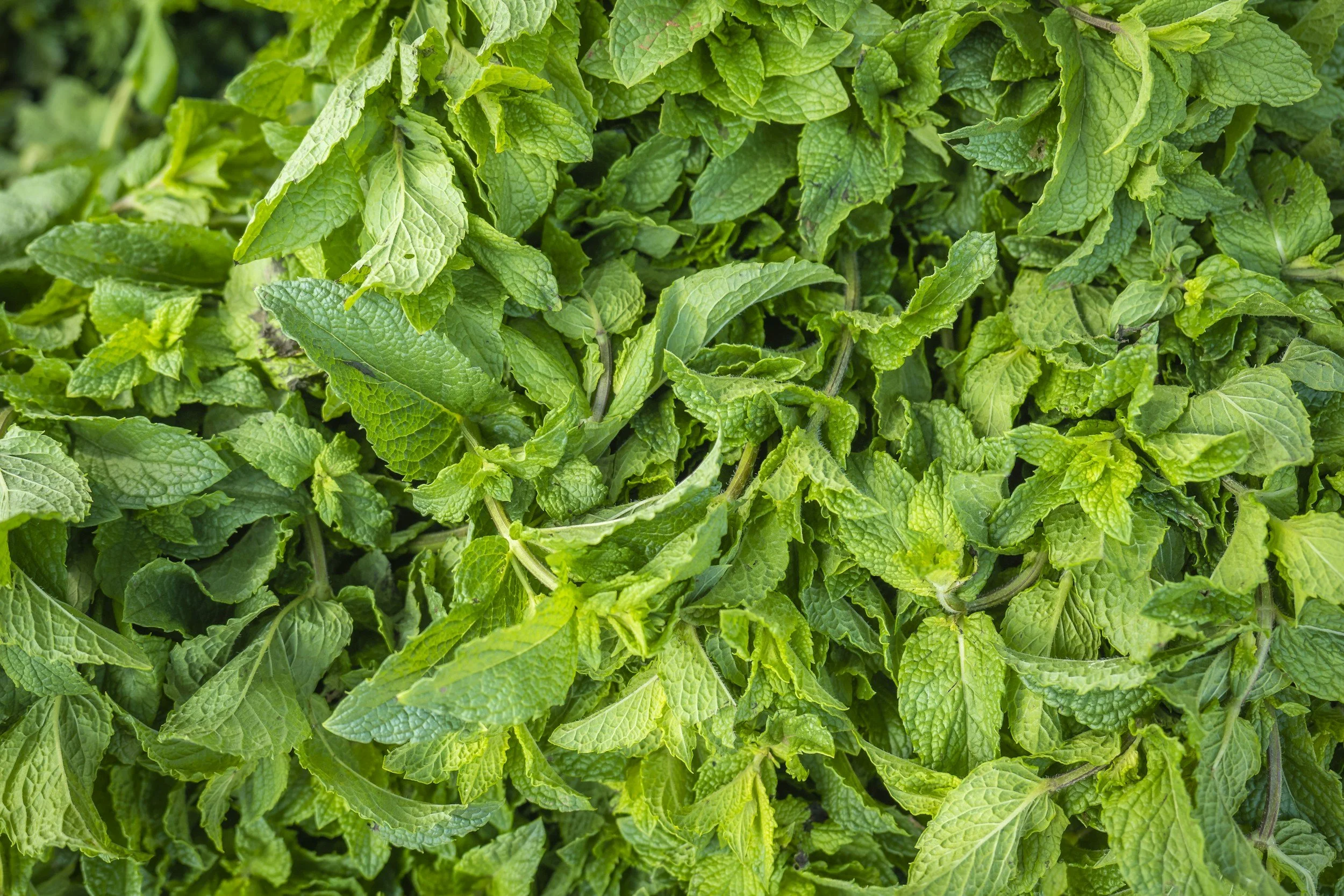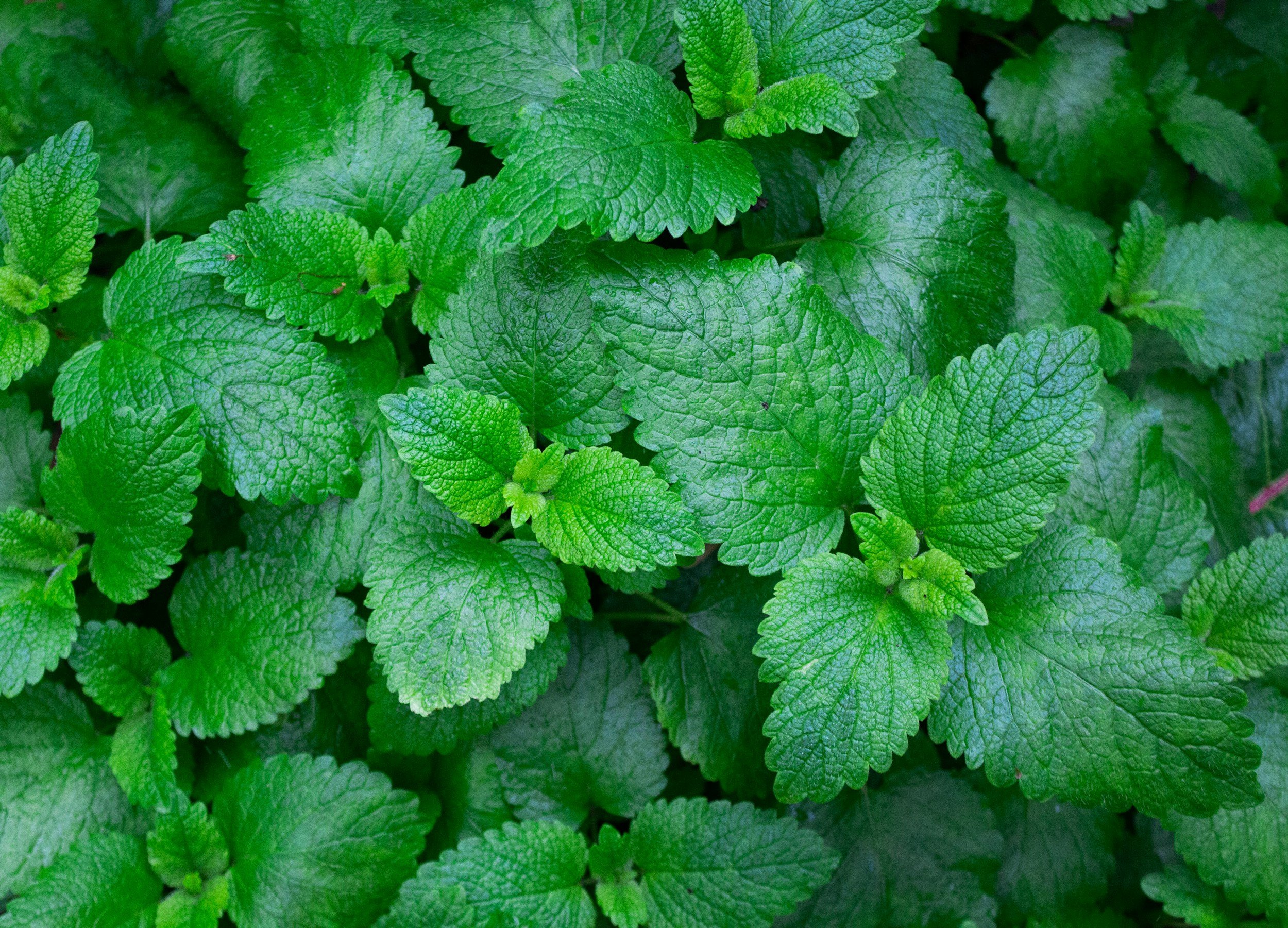
Peppermint
Peppermint
(Mentha x piperita)
Peppermint (Mentha × piperita) is a lively, cooling digestive herb that clears the head and settles the gut. Its aromatic oils ease spasms, reduce gas and bloating, and open the airways, making it useful in cold, catarrhal, or sluggish digestive states. A classic tea herb that’s both comforting and therapeutically active.
Plant Family
Lamiaceae
Other Significant Names
Brandy mint
Parts Used
Folia (Leaves)
Typical Forms of Prescription
Infusions
Tablets
Tinctures
Peppermint (Mentha × piperita) – Clinical Snapshot
Primary Actions
Carminative
Aromatic
Diaphoretic
Antiemetic
Nervine
Antiseptic
Antifungal
Aesthetic (to skin)
Primary Indications
Digestive Support:
Intestinal colic
Irritable Bowel Syndrome (IBS)
Flatulent dyspepsia
Nausea (including pregnancy and motion)
Vomiting & travel sickness
Digestive headaches
Diarrhoea
Spastic colon/constipation
Nervous & Skin Issues:
Neuralgia
Fever
Eczema
Shingles
Herpes
Inflamed skin
⚠️Cautions / Safety⚠️
Sensitivity to menthol
Caution with acid reflux and gallstones/biliary disorders
Salicylate sensitivity or aspirin-induced asthma
Not suitable for children under 4 years (may induce respiratory issues; use Nepeta instead)
Care in pregnancy when used in medicinal amounts
Mentha x piperita
Phytochemistry and Pharmacology
-
Includes: Menthol, menthone, menthyl acetate, 1,8-cineole
Action: Antispasmodic, carminative, antimicrobial, cooling
Use: These aromatic oils are responsible for peppermint’s signature cooling effect and its powerful actions on the digestive and respiratory systems. Menthol helps relax smooth muscle, relieving cramps, bloating, and gas, and provides a topical analgesic effect when used externally (e.g. in muscle rubs or inhalants). Cineole and menthone offer antimicrobial and expectorant properties, supporting use in respiratory infections and sinus congestion.
-
Includes: Luteolin, eriocitrin, hesperidin
Action: Antioxidant, anti-inflammatory, capillary protective
Use: Flavonoids support vascular tone, reduce inflammation, and help protect tissues from oxidative stress, especially in chronic inflammatory digestive and respiratory conditions.
-
Includes: Rosmarinic acid, caffeic acid
Action: Anti-inflammatory, antiallergic, tissue-protective
Use: Rosmarinic acid contributes to peppermint’s ability to calm allergic responses, reduce gut and airway inflammation, and support mucosal healing, making peppermint ideal for IBS, seasonal allergies, or tense digestion.
-
Action: Astringent, anti-inflammatory
Use: Tannins support gut lining integrity and contribute to peppermint’s use in diarrhoea, IBD, and other conditions involving leaky or inflamed gut tissue. They also assist in drying up excessive mucus in colds and catarrh.
-
Action: Digestive stimulant, bile stimulant
Use: Although less bitter than herbs like gentian, peppermint still has enough bitter constituents to help stimulate digestive enzymes and bile flow, particularly when taken as a hot infusion before meals.
Traditional use
Peppermint has long been used in traditional medicine for digestive complaints, nausea, coughs, and to reduce milk production during weaning. Historically, It was brewed as a cooling fever tea and used topically for headaches and muscle aches. In many cultures, peppermint has been prized as a household remedy for various everyday ailments.
Clinical discussion
Like other members of the Lamiaceae family, peppermint contains highly aromatic essential oils. These oils have antimicrobial and carminative actions, which explain why peppermint is highly valued for many digestive disorders, particularly nausea, flatulence, and IBS.
The oils in peppermint, particularly the volatile oil menthol, relax the gastrointestinal muscles, significantly reducing spasm and pain. Because of peppermint’s relaxant property, it should not be prescribed in cases of hyperacidity, where over-relaxation of the oesophageal sphincter can worsen symptoms by increasing acid leakage.
The herb has been valued in infusions to help cool fevers, and it is used in a traditional cold and flu infusion mix with elderflower and yarrow.
Peppermint is used to help clear the head, aid concentration, ease headaches, and help with arthritic pain. In these situations, one or two drops of the essential oil can be added to a base oil and massaged into the temples, or a cup of fresh mint tea can be taken.
Cultivation/Harvesting
Peppermint is a vigorous perennial that spreads rapidly via underground rhizomes, so it’s best grown in containers or confined beds. It prefers sunny, sheltered positions and moist but well-drained soil. Its essential oil content is highest when grown in full sun.
Harvest aerial parts before or during flowering, when the oil content peaks.
Cut early in the day after the dew has dried, and dry in the shade to preserve the volatile oils.
The plant can be cut several times per season and will regenerate quickly.
Peppermint crossbreeds easily and can lose potency over time, so for consistent quality, it is recommended to replant from strong rootstock every few years.
Key Botanical Features of Mentha × piperita (Peppermint)
Mentha × piperita, commonly known as peppermint, is a hybrid mint species — a cross between Mentha aquatica (water mint) and Mentha spicata (spearmint). It’s a fast-growing, aromatic perennial herb in the Lamiaceae (mint) family, valued for its cooling menthol-rich leaves and wide use in culinary and medicinal preparations.
Growth Habit
Type: Perennial herb.
Size: Grows 30–90 cm (1–3 feet) tall.
Stem: Square-shaped, purple to green, and slightly hairy, typical of the mint family.
Growth: Spreads vigorously via creeping rhizomes and underground stolons.
Leaves
Type: Opposite, simple, ovate to lanceolate.
Size: 4–9 cm (1.5–3.5 inches) long.
Margins: Sharply toothed (serrated).
Surface: Slightly hairy, especially on the veins.
Colour: Dark green, often with a purplish tinge.
Aroma: Strong, minty scent due to high menthol content.
Flowers
Type: Small, tubular, and arranged in dense terminal spikes or whorls.
Colour: Light purple to lilac-pink.
Size: Each flower is about 5–7 mm long.
Blooming Period: Mid to late summer (July–September).
Pollination: By bees and butterflies.
Fruits & Seeds
Fruit Type: Nutlets, though rarely viable due to hybrid sterility.
Reproduction: Primarily vegetative (via runners and rhizomes).
Seed: If formed, usually infertile.
Roots
Type: Spreading rhizomes and stolons.
Function: Enables rapid colonisation and makes peppermint an aggressive grower if not contained.
Habitat & Growth Conditions
Climate: Prefers temperate climates.
Soil: Thrives in moist, rich, well-drained soil.
Sunlight: Grows best in full sun to partial shade.
Water Requirements: Requires consistently moist soil.
Distribution: Widely cultivated globally, often in herb gardens and commercially for essential oil production.
Sustainability/conservation:
Widely cultivated.
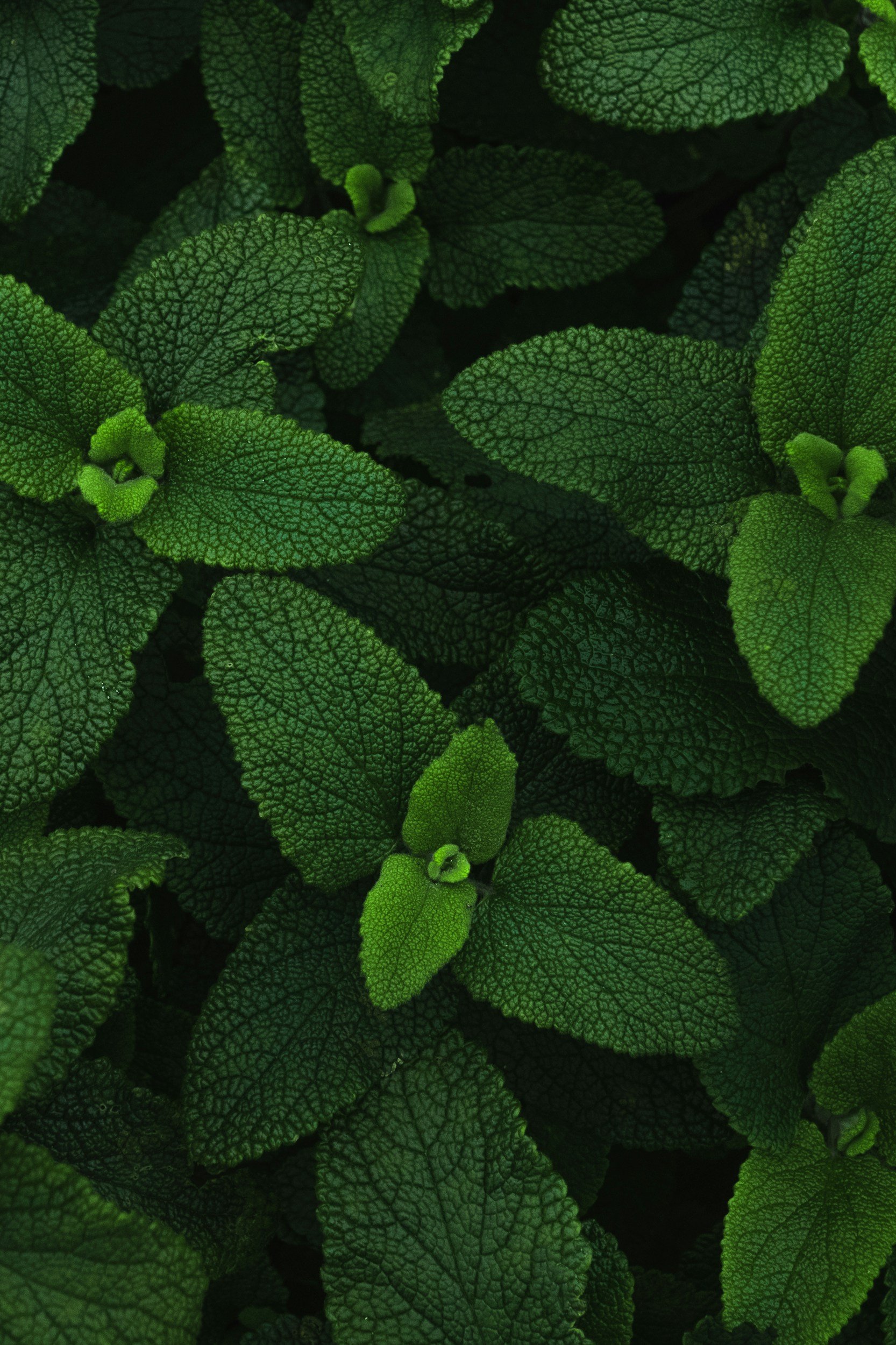

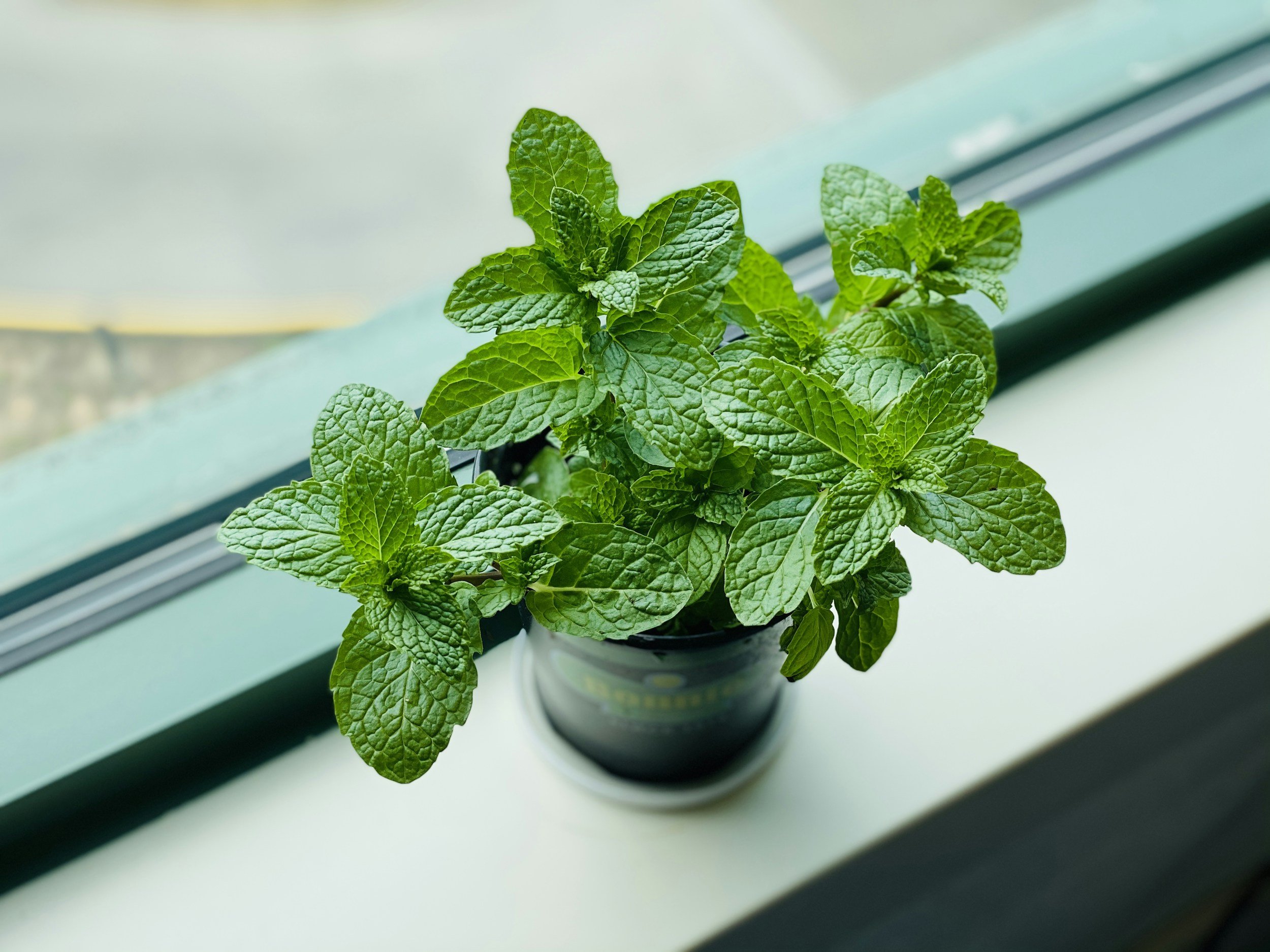
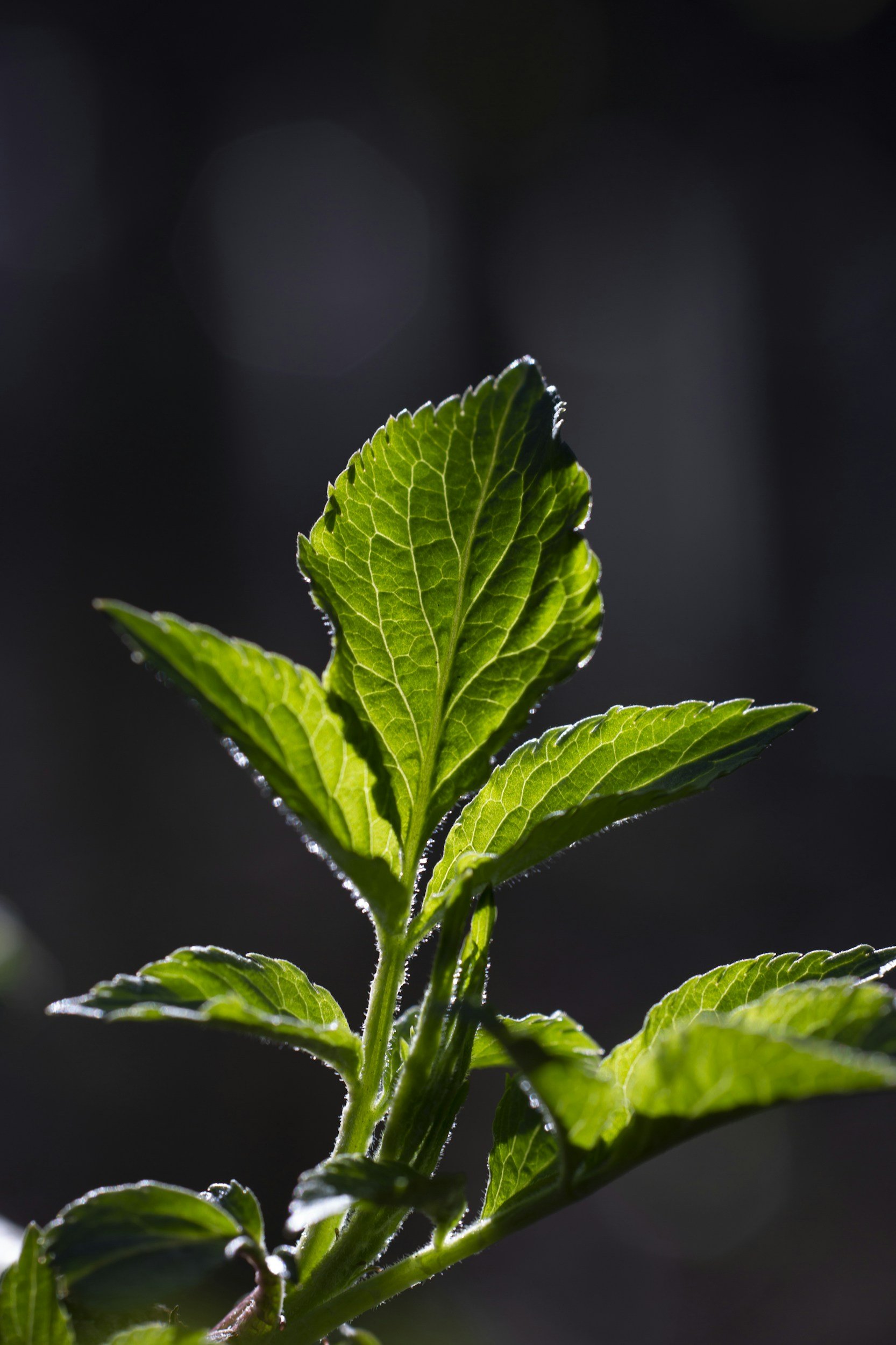
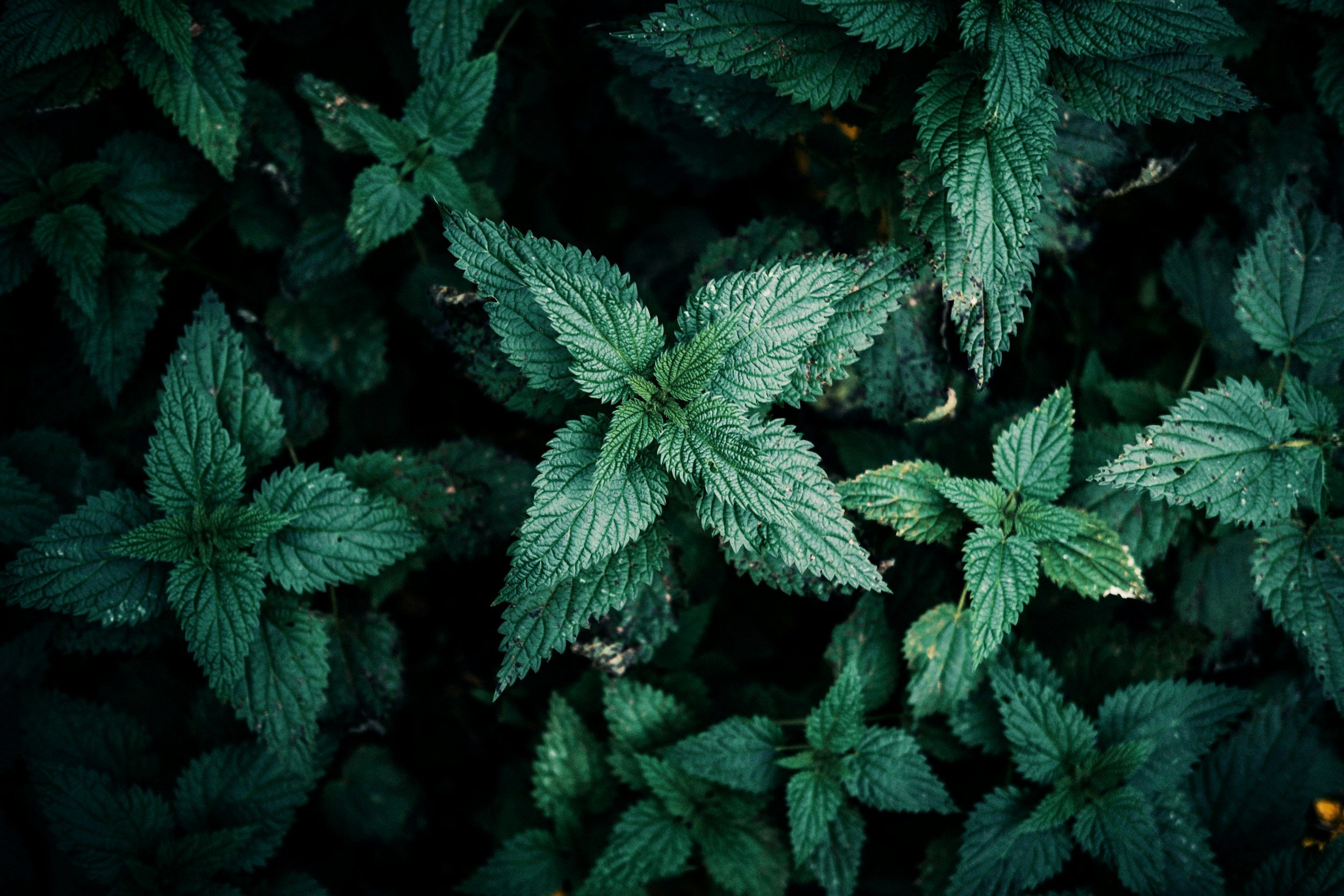
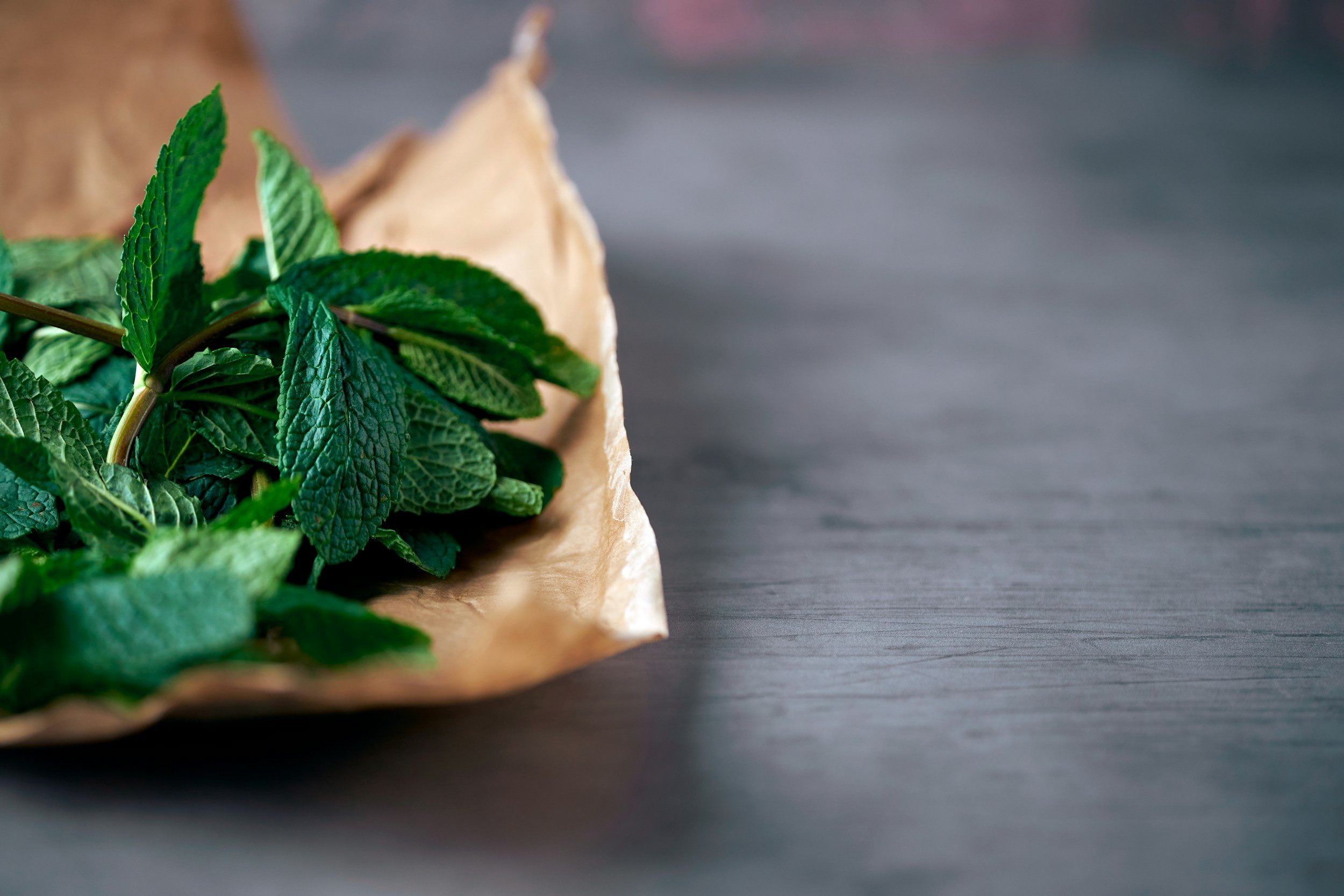
Sources
Bartram, T. (1998). Bartram’s encyclopedia of herbal medicine. Constable.
Fisher, C. (2018). Materia medica of western herbs (Rev. ed.). Aeon Books.
Hedley, C., & Shaw, N. (2020). A herbal book of making and taking. Aeon Books.
Hoffmann, D. (2003). Medical herbalism: The science and practice of herbal medicine. Healing Arts Press.
McIntyre, A. (2019). The complete herbal tutor (Revised & expanded ed.). Aeon Books.
Royal Botanic Gardens, Kew. (n.d.). Plants of the World Online. https://powo.science.kew.org/
Mills, S., & Bone, K. (2013). Principles and practice of phytotherapy: Modern herbal medicine (2nd ed.). Churchill Livingstone; Elsevier.
Barnes, J., Anderson, L. A., & Phillipson, J. D. (2013). Herbal medicines (3rd ed.). Pharmaceutical Press.
Benzie, I. F. F., & Wachtel-Galor, S. (Eds.). (2011). Herbal medicine: Biomolecular and clinical aspects (2nd ed.). CRC Press; Taylor & Francis.
Evans, W. C. (2009). Trease and Evans’ pharmacognosy (16th ed.). Elsevier.
Disclaimer: This page is for educational purposes only. Consult a qualified medical herbalist before using herbs, especially during pregnancy, when trying to conceive, while breastfeeding, for medical conditions, or with children.
Read the full disclaimer → Medical Disclaimer.




